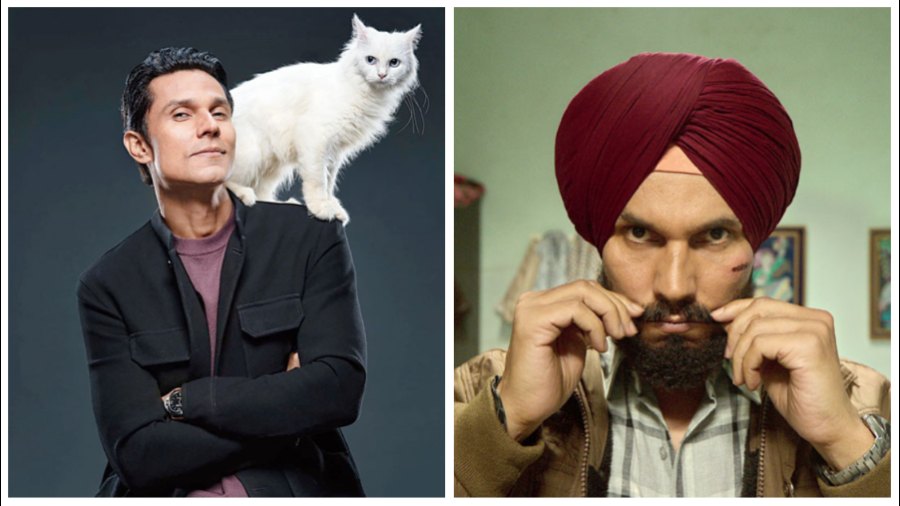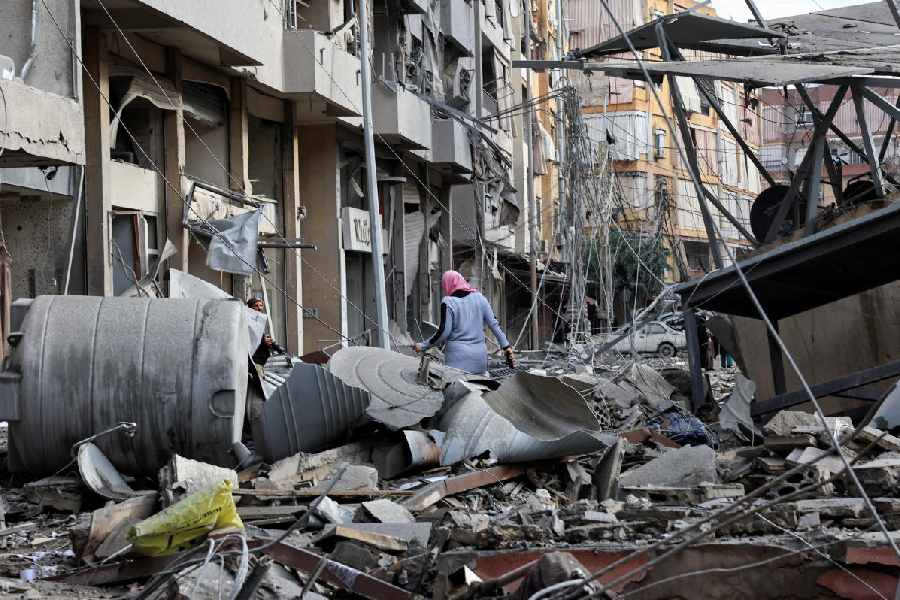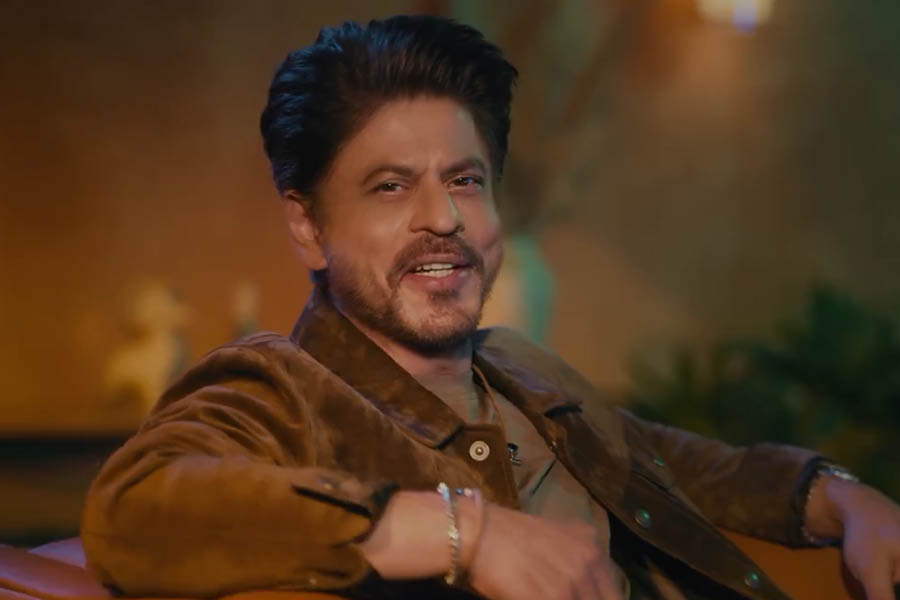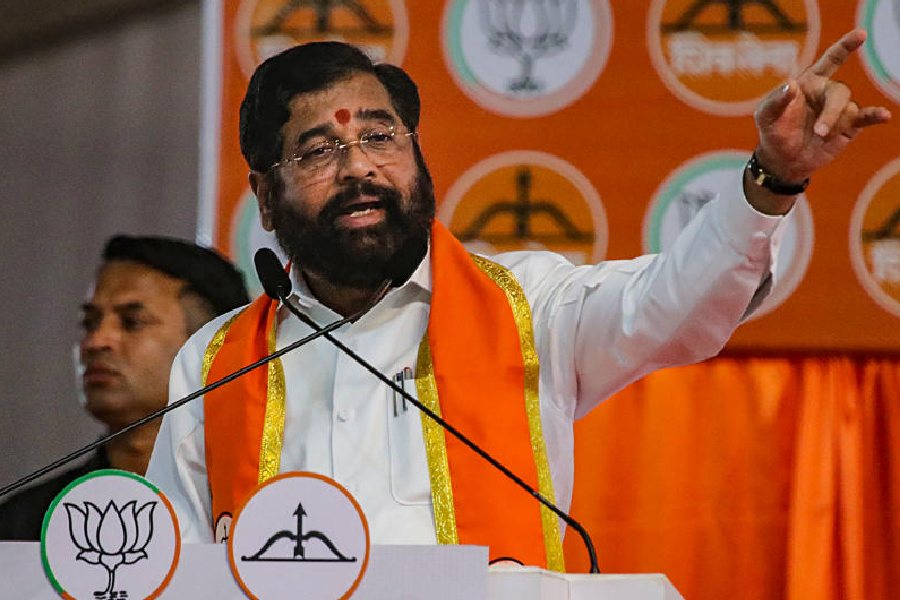Randeep Hooda makes his web series debut with CAT, a powerful drama about revenge and relationships set against the backdrop of insurgency and the drug menace that has had Punjab in its grip for decades now. Randeep’s Gurnaam plays a double agent in this eight-episode hardhitting drama that is directed by Balwinder Singh Janjua and also stars Suvinder Vicky and Hasleen Kaur as part of a large ensemble cast.
With the series premiering on Netflix today, The Telegraph caught up with Randeep on being Gurnaam, why his process as an actor is deeply personal and making the ‘directional’ shift from ‘jamai to ladki ka baap’!
What intrigued you the most about CAT?
Well, the screenplay was very, very engaging... a lot of high drama. I have already done a movie with the director, Balwinder Singh Janjua, called Tera Kya Hoga Lovely (slated to release sometime next year). It’s a social comedy based around our country’s obsession with fair skin. My dear friend Panchali Chakravarty is the producer of CAT, and I got to play a character who is a double agent and is thrown into these dramatic situations all the time. It’s a great role.
Your director Balwinder Janjua told me that the story of CAT — that of a Punjab battling both insurgency and the drug menace — is one which is not only close to him, but also deeply personal to anyone who has lived in Punjab, especially in the ’80s and ’90s. How much does what happens in CAT resonate with you?
We have all grown up with these stories. I am from Haryana, which is not far away from the hub of all that’s happened in Punjab and continues till this day. In fact, everyone in India has grown up with these stories.
But that’s just the backdrop. People should not mistake CAT as a series about these two issues or a docu-drama that explores drugs or the insurgency. We haven’t made this series from this point of view. It’s just that the show’s characters, who are anyway fictional — though they may have existed in real life — operate in the middle of these two horrific issues that have always affected Punjab. We show the kind of effect it had on common people, which the characters of this series are. It’s a very sad part of the history of Punjab, but that’s not what we concentrated on. We concentrated on the characters and the time they existed in and what they encountered.
The series doesn’t take a stand of expose or education or awareness that we want to create. It’s an entertainment piece which engages you and keeps you hooked. That’s all that it is. It’s more of a human story....
Your character Gurnaam, right from the beginning, has his moral compass constantly shifting. Did you struggle with that or have you reached that point as an actor where you don’t judge the people that you play?
All the characters that I play are a part of me, but I am none of them. As an actor, the biggest boon is to be part of situations and do things that do not have any real-life consequences. All of us live double lives — there is a face that we have for the public, a face that we have for the people close to us and then there is a face when we are all alone and no one is watching. That is something that has always fascinated me... the fact that this duality exists in all human beings. So playing this man wasn’t very hard to tap into.
Though it is true that in real life we all try our best to hide our emotions. While playing this man, I had the tricky task of feeling what I am feeling but I couldn’t show it.
This is your second project with Balwinder. What is it about him as a director that impresses you the most?
I have always had great collaborative experiences with my directors. In Balli’s case, it’s further enhanced. That’s because if your protagonist is a part of the overall understanding of the film and the discussions around a project, then it becomes all the more easier.
Balli and I have a very good understanding and we also have our pow-wow and arguments as well. But all that happens before we get to the set. Once we are on set, it’s just very easy camaraderie.
In fact, on most of my projects, I have never had a long-drawn conversation on set about anything. I hardly ever talk to my directors, except to discuss what’s for lunch!
Would you say that CAT is the closest that you come to in terms of playing a hinterland, son of the soil character?
Highway and Laal Rang were some of the others....
True. But in CAT, I believe you were talking in Punjabi even beyond set in order to retain the authenticity of character, scene and setting...
These are basic things that every actor should do. In my case, I simply enjoy doing it.
These are also interesting times given that CAT is predominantly in Punjabi and yet has the potential to reach out to global audiences, courtesy the presence of subtitles and the reach of streaming platforms...
I don’t think Punjabi has that much of a language barrier as compared to some other languages. Most of the hit songs in Hindi films today are in Punjabi. I would have refused the show if they had asked me to speak in Hindi. These kind of things matter a lot to me. I wouldn’t really call CAT a Punjabi show... it’s an original language show based in Punjab.
Most of the characters that you play warrant a physical or an emotional shift, and sometimes both. In the case of Gurnaam, the internalisation of the character was a lot more. I am coming from a place where I have watched the series and what I organically noticed is that Gurnaam’s hunched shoulders are a physical manifestation of the emotional burden he’s carrying....
For all my characters, and more so for Gurnaam, I work on the thoughts of the people I play, and the body language automatically follows. I guess I was burdened by those thoughts and hence the hunched shoulders followed organically. That’s what acting is.
You had told me a few years ago that the audience that doesn’t understand the actor in you and your process broad-strokes the parts that you play as ‘intense’, and that you dislike the term. Has that changed?
I guess, I guess. I think a large part of it can be attributed to the time people had during the pandemic, when they didn’t only indulge in escapefantasy content but also watched deeper things.
But what I do is not for the audience... I do it for myself. I do it to keep my work interesting for myself and, in turn, I hope it automatically becomes interesting for the audience. That’s what drives me. I don’t do it to tell the audience: ‘Dekha maine kya kiya?’ (Laughs)
What I do as an actor is very personal and is a result of the deep conversations I have with myself in my head. Looking at it from the outside would only ruin it for me. Like, never in my whole career so far have I gone and seen the monitor after a shot on a movie set. Then that means that I am seeing myself from the outside, and I end up not liking it.
But given that you are now debuting as director with Swatantra Veer Savarkar, you will be compelled to look at the monitor all the time!
It’s the most painful thing! (Laughs) But I think I am naturally fitting into being a director. I have always had a knack for scripting and the understanding of every character in a film. Apart from my own lines, I usually know every characters’ lines in the films I act in. So, directing is not such a big shift, but I must tell you that I have new-found respect for all my directors. It’s a much tougher job... my job as an actor is more of an individual sport, while direction is a team sport. All of a sudden, I have gone from being the jamai to the ladki ka baap!
My favourite Randeep Hooda role is...Tell t2@abp.in











